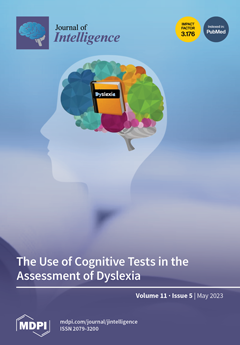Everyone’s time is limited, and there is competition between different aspects of time use; this requires comprehensive consideration of the effects of different aspects of time use on cognitive achievement in adolescents. This study uses a dataset of 11,717 students from a nationally
[...] Read more.
Everyone’s time is limited, and there is competition between different aspects of time use; this requires comprehensive consideration of the effects of different aspects of time use on cognitive achievement in adolescents. This study uses a dataset of 11,717 students from a nationally representative large-scale survey project conducted in 2013 to 2014 to clarify the relationship between time use (including working on homework, playing sports, surfing the Internet, watching TV, and sleeping) and cognitive achievement among Chinese adolescents, and explores the mediating role of depression symptoms in the relationship between time use and cognitive achievement. The results of the correlation analysis show that the average daily time spent on homework, playing sports, and sleeping is significantly positively correlated with cognitive achievement (
p < 0.01), while time spent surfing the Internet and watching TV are significantly negatively correlated with cognitive achievement (
p < 0.01). The results of the mediating effect model show that depression symptoms play a mediating role in the relationship between time use and cognitive achievement among Chinese adolescents. Specifically, time spent playing sports (indirect effect = 0.008,
p < 0.001) and sleeping (indirect effect = 0.015,
p < 0.001) have a positive effect on cognitive achievement when using depression symptoms as mediators; time spent on homework (indirect effect = −0.004,
p < 0.001), surfing the Internet (indirect effect = −0.002,
p = 0.046), and watching TV (indirect effect = −0.005,
p < 0.001) have a negative effect on cognitive achievement when using depression symptoms as mediators. This study contributes to the understanding of the relationship between time use and cognitive achievement among Chinese adolescents.
Full article






